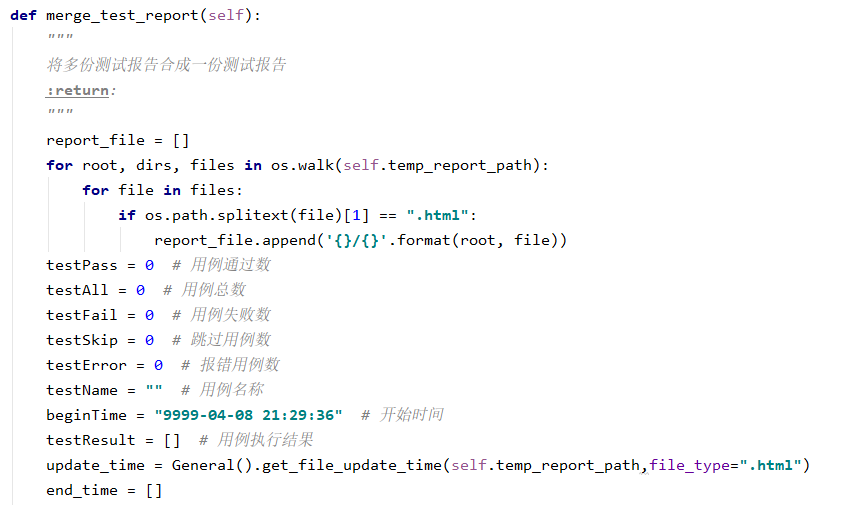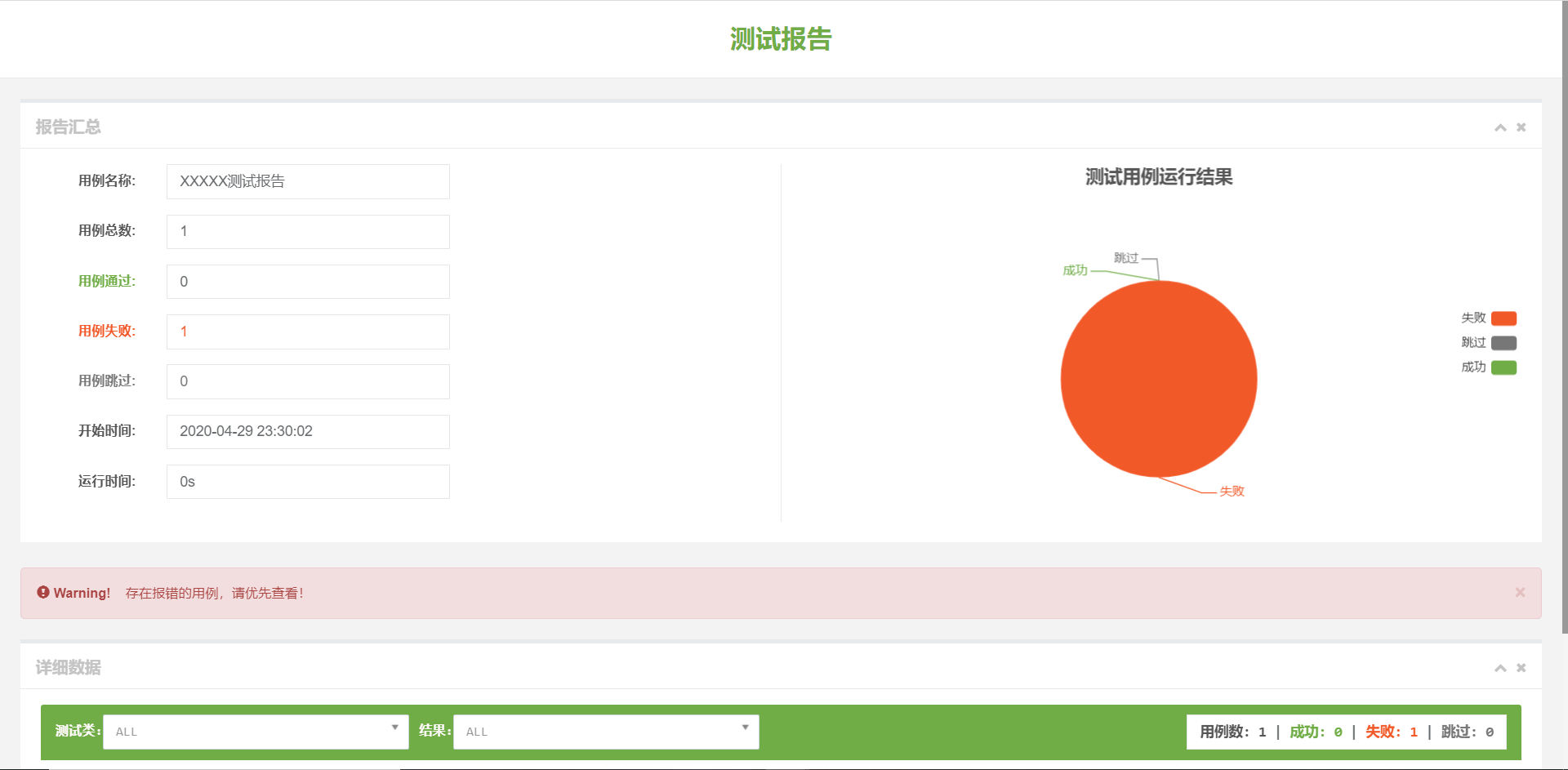(一)说明
说明在API自动化如何使用多线程去执行测试用例,合并测试报告。
不同测试框架有不同的地方,这里以unittest框架+BeautifulReport为例进行说明。
步骤大概分为以下几步:
1、获取所有测试套件。以[(测试套件1,0,),(测试套件, 1,).....]的格式返回
2、应用concurrent.futures.ThreadPoolExecutor 将第一步的测试套件传给我们执行测试的方法,多线程并发执行用例,将测试报告放到临时目录下。
3、将临时目录下的测试报告合并为一份测试报告
(二)获得测试套件、执行测试代码(仅供参考)
仅供参考,代码本身就不是完整的。
1 #!/usr/bin/python 2 # -*- coding: utf-8 -*- 3 4 from unittest import defaultTestLoader 5 from common.general import General 6 from BeautifulReport import BeautifulReport 7 import concurrent.futures 8 9 10 class RunTestTool(): 11 12 def __init__(self, temp_report_path, report_path, report_name="report_new.html"): 13 """ 14 运行测试公共组件 15 :param temp_report_path: 测试报告临时存放目录(使用多线程生成的测试报告存放目录) 16 :param report_path: 测试报告路径 17 :param report_name: 测试报告文件名称 18 """ 19 self.project_path = General.get_project_path() # 获取工程路径 20 self.temp_report_path = '{}{}'.format(self.project_path, temp_report_path) 21 22 def get_all_test_suit(self, test_case_path,description="测试报告", pattern='*_test.py'): 23 """ 24 返回目录及子目录下的所有测试用例 25 :param description: 测试报告描述 26 :param test_case_path: 测试用例目录,接受list uple 27 :param pattern: 匹配测试用例文件的正则表达式 28 :return: 29 """ 30 all_test_suit = [] 31 test_suit = defaultTestLoader.discover(start_dir=test_case_path[0], 32 pattern=pattern, 33 top_level_dir=None) 34 if len(test_case_path) > 1: 35 for case_path in test_case_path[1:]: 36 path = "{}{}".format(self.project_path, case_path) 37 suit = defaultTestLoader.discover(start_dir=path, 38 pattern=pattern, 39 top_level_dir=path) 40 test_suit.addTest(suit) 41 num = 0 42 for i in test_suit: 43 if len(list(i)) != 0: 44 all_test_suit.append((i, num,description)) 45 num += 1 46 return all_test_suit 47 48 def run_test(self, test_suit): 49 description = test_suit[2] 50 result = BeautifulReport(test_suit[0]) 51 result.report(filename='report{}.html'.format(test_suit[1]), 52 description=description, 53 report_dir=self.temp_report_path) 54 55 56 test_case_path_list = ["目录1",'目录2'] 57 temp_report_path = "" # 测试报告临时目录 58 report_path = "" # 测试报告目录 59 rt = RunTestTool(temp_report_path=temp_report_path, report_path=report_path, ) 60 test_suit = rt.get_all_test_suit(test_case_path=test_case_path_list, 61 description="描述11", 62 pattern="*_test.py") 63 with concurrent.futures.ThreadPoolExecutor(max_workers=5) as executor: # 多线程执行用例 64 executor.map(rt.run_test, test_suit)
(三)合并测试报告
代码就不提供了,提供一个思路,会正则表达式应该很容易实现这个功能。
1、看下BeautifulReport库生成的测试报告,会发现测试结果都放在这个变量里面 var resultData。
2、 这样我们可以使用正则表达式将每一个临时测试报告中的resultData的值提取出来
3、然后合并得到最终的结果,再序列化后替换进HTML报告中即可。

代码只截取了部分。

